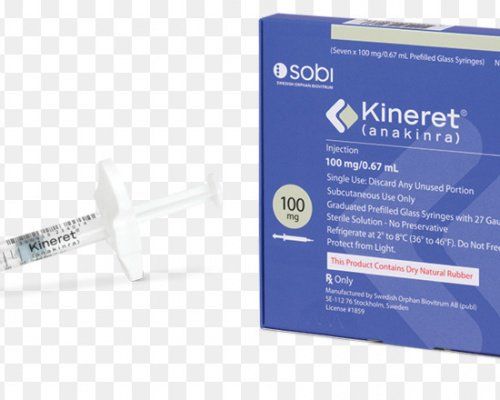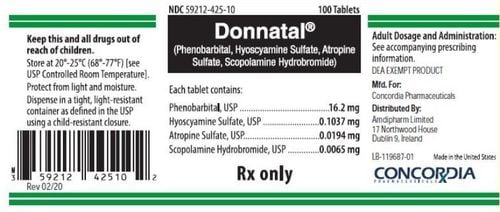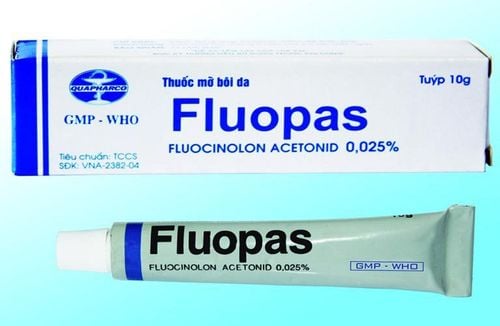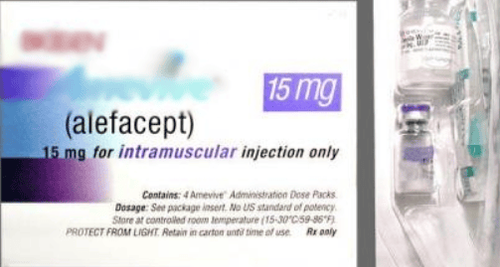This is an automatically translated article.
Cutasic is a tablet medicine commonly used to treat inflammatory conditions such as arthritis, lupus, psoriasis, ulcerative colitis, allergic disorders, endocrine disorders, and conditions. affects the skin, eyes, lungs, nervous system, stomach, or blood cells. Cutasic can be used alone or in combination with other medications.1. What is Cutasic?
Cutasic is an anti-inflammatory drug with the active ingredient methylprednisolone with a number of other excipients and auxiliary materials. With its ingredients, what effect does Cutasic have? Methylprednisolone, the active ingredient in Cutasic, is a corticosteroid with properties that closely resemble the natural hormones produced by the adrenal glands. The main effect of Cutasic is to reduce swelling and the body's natural immune system response. The drug binds DNA in the body's cells and regulates the expression of certain genes. This stimulates the body to produce certain proteins and enzymes that inhibit the activity of inflammatory cells. Cutasic also works to reduce the permeability of blood vessels to prevent the migration of inflammatory cells to the injured site.
Cutasic medicine is indicated for the following subjects:
Abnormal function of the adrenal cortex Atopic dermatitis, arthritis, allergic airway inflammation, rheumatism, ulcerative colitis and blood diseases Lupus erythematosus , bronchial asthma , hemolytic anemia or agranulocytosis Severe allergic disease Acute leukemia, lymphoma Breast and prostate cancer Primary nephrotic syndrome
2. How to use and dose of Cutasic
How to use: Take the drug orally. Take Cutasic tablets whole with a sufficient amount of water. The recommended time of use is after meals.
Dosage for adults: The starting dose is 4 - 48mg / day, can be used as a single dose or in divided doses depending on the disease.
Multiple sclerosis: Initial dose 160mg/day x 7 days, next dose 64mg/day x 2 days/time x 1 month; Rheumatoid arthritis: Initial dose 4-6mg/day. Acute episode, 16 - 32mg/day, then gradually decrease; Severe rheumatic disease: 0.8mg/kg/day divided into small doses, then a single dose per day; Acute asthma attack: 32 - 48mg/day dosed for 5 days. When recovering from an acute attack, the dose is gradually reduced; Chronic ulcerative colitis: Mild disease enema 80mg/day, severe exacerbation take 8-24mg/day; Primary nephrotic syndrome: start with a dose of 0.8 - 1.6 mg/kg x 6 weeks, then reduce the dose for the next 6 - 8 weeks; Immune hemolytic anemia: Oral 64mg/day x 3 days, treatment for at least 6-8 weeks; Sarcoid disease: Initial dose of 0.8mg/kg/day for remission. Low maintenance dose 8mg/day. Dosage for children:
Adrenal insufficiency: 0.117mg/kg, divided into 3 times/day; Other indications: 0.417 - 1.67mg/kg, divided into 3 or 4 times/day.
3. Side effects of the drug Cutasic
The most common side effects that can be experienced with the use of Cutasic :
Swelling in the hands or ankles Dizziness, lightheadedness, menstrual cycle changes, headache, mild muscle weakness or pain, upset stomach thick, flatulence. Other undesirable effects:
Shortness of breath, fluttering in the chest, irregular heartbeat, convulsions; bruising, swelling, leg cramps, a wound that doesn't heal, sudden pain in an arm, leg, or back, thinning skin, numbness or tingling; blurred vision, tunnel vision, eye pain, seeing halos around lights; Personality changes, severe depression, unusual thoughts or behavior; Constipation, black or bloody stools; Coughing up blood or vomit that looks like coffee grounds; Increased thirst, frequent urination; Rapid weight gain.
4. Be careful when using Cutasic
Contraindications to use Cutasic for the following cases:
Hypersensitivity to the components of the drug, especially Methylprednisolone. Caution when using Cutasic medicine for the following cases:
Should not be used in pregnant women and nursing mothers. Use caution when administering the drug to people receiving live or attenuated virus vaccines.
5. Cutasic drug interactions
Do not use cyclosporin and methylprednisolone concurrently, because drug inhibition or convulsions may occur.
Inducers of liver enzymes may increase the clearance of methylprednisolone in Cutasic and the dose may need to be increased to achieve the desired effect.
Drugs such as troleandomycin and ketoconazole can inhibit the metabolism of methylprednisolone and reduce its clearance. Therefore, dose titration is required to avoid steroid toxicity.
Chronic high-dose spirin may be reduced clearance if taken with Cutasic. This may also lead to a decrease in serum salicylates and an increased risk of salicylate toxicity upon withdrawal of methylprednisolone. Aspirin should be used with caution with corticosteroids in patients with hypoprothrombinemia.
The effects of Cutasic and oral anticoagulants are different. There have been reports of enhancing as well as attenuating effects of anticoagulants when co-administered with it. Therefore, it is necessary to monitor the coagulation parameters to maintain the anticoagulant effect.
Hopefully with the above sharing about Cutasic medicine, it will help the treatment process in patients be effective and minimize the side effects to the patient's health.
Please dial HOTLINE for more information or register for an appointment HERE. Download MyVinmec app to make appointments faster and to manage your bookings easily.













